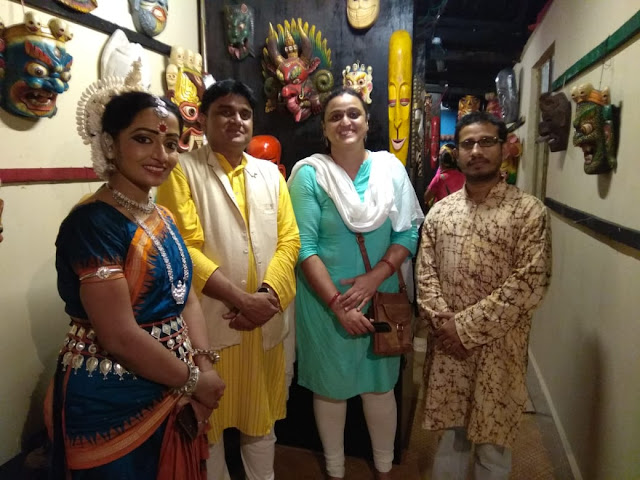Bagan
Mahotsav
Organized
and curated by the Himalayan World Museum,
Buttabari-Bagdogra
The Himalaya World Museum, a unit of Himalayan
Heritage Research and Development Society, Gurung Basti, Central Pandum, Sikkim
has organized the grand 3 days long Bagan Mahotsav 2019 – A NationalCultural
Festival and Seminar presenting the
legacy of the Tea Gardens, Bagdogra. The festival is being organized in
association with Ministry of Culture, Government of India.

The advent of the festival on 16th March
2019 started with the traditional games of the Tea Gardens of the regionand the
Seminar chaired by Dr. Om Prakash Bharti who addressed the audience saying “The
Himalaya is the womb of diverseindigenous and unique cultures and traditions.
Its tribes possess a variety of languages, handicrafts and art forms which are treasures
not only for India but also for the countries in the Indian Subcontinent.
Museums play an essential role in the collection and preservation of the
diverse cultural heritage of humanity.Himalaya World Museum is an initiative to
showcase such treasures to the world and help in the economic development and
conservation of the rich heritage of the Himalayas.” Other dignitaries such as Dr.
Jayanta Kumar Barman, Assistant Prof. Dept of Music (Sikkim University), Dr.
Pompi Paul, Hari Shankar Gupta, Dharm Prakash Manto also presented their papers
on this matter.
The 2nd day of Bagan Mahotsav begun with a
splendid procession showcasing the different colorful diversities of various tribal
communities followed byperformances of various eminent artists and groups from
all over India. The renowned Lepcha Maestro Padmashree Sonam TsheringLepcha
graced the inaugural ceremony on 17 March,2019 as the Chief Guest. He praised the initiative saying “The culture
and heritage of most tribes and local residents of the Himalayas are ceasing to
exist due to the lack of awareness and poor economic conditions. This is a
great effort from Himalaya World Museum to uplift, inspire and conserve these
traditions and present them on platform that will create an awareness.” The
performances of the artists were in two phases:the morning schedule started at 2pm
at the main Museum ground and continued till 6 pm. The evening schedule started
from 7pm till 10 pm at Himalaya World Museum camp house.Several performances by
notable tribal and folk artists through their ethnic art forms likeBhavaiya
Song by Munmun Barman, Aparna Barman, Ravi Chand, Ravi Das; Bamboo dance by Amar
Singha, Mechini dance by Tejen Barman, Oraon dance by PriyaTirky,
Rajdharinritya by GergeruRayand Bindu Singh,Dhimal dance byGarjan Mallik,
DholBadan by Dhananjay Ray and also Dotarabadan by artists from North Bengal,
Cochbehar, Raiganj and Siliguri and eminent Bharatnatyam performer Dr.
Mandakranta Roy left the audience mesmerized. Performances ofSasmita Mohanty
(Odissi),Pompi Paul (Odissi), Suraj Kumar Sahu (Odissi), Sangita Chaki
(Bharatnatyam),and TanmoySamaddar (Odissi) left the audience awestruck with
their impeccable techniques, delicate footworks and perfections in their art
forms.
The concluding day, 18th of March, was dignified
by the Chief Guest PadmashriKarimulHaque who was tremendously impressed after
visiting the museum. He said “I am mesmerized with the huge collection of rare
masks and artifacts brought about from different parts of the Himalayas and the
world.We need more museums like these, for tourists, art enthusiasts and also
our local people to learn about the rich ancestral history that we possess.
Kudos to the Himalaya World Museum for such a great determination.” Immaculate
performances from Soma Mondal (Bharatnatyam), DebduttaLahiri (Odissi), Somali
Roy (kathak), Sabyasachi Dutta
(JalpaiguriSristi Mime ), Sikha Bhattacharya (kathak), Sumita Paul (Odissi),
Pritam Das (Bharatnatyam),Sulagna Ray (Odissi), RimpiSaha (Bharatnatyam),
ArniBagchi (GoudiyaNritya), Paromita Mukherjee ( Bharatnatyam) left the
audience spellbound and wanting more.













